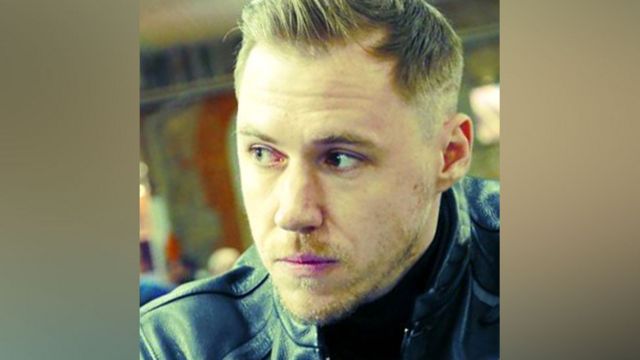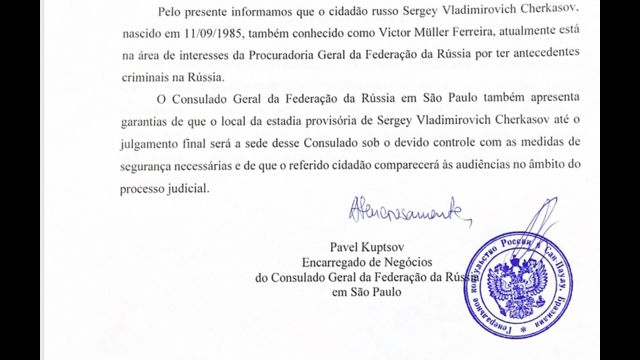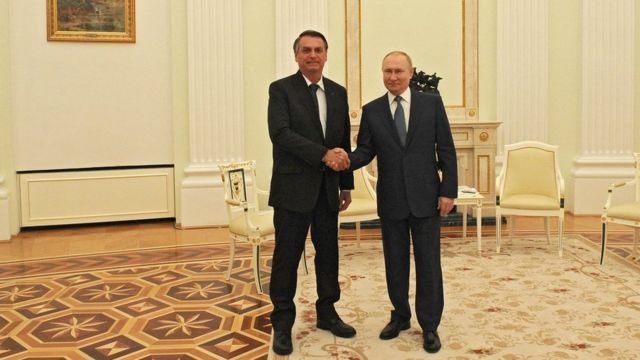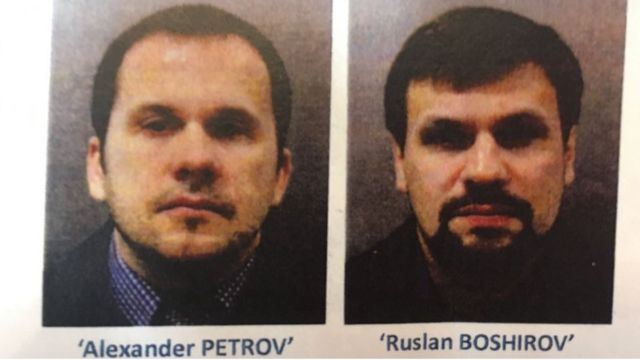Greetings Paulo Roberto Almeida,
New items have been posted in H-Diplo.
H-Diplo Review Essay 500 - Pomeranz on Hirsch, Soviet Judgment at Nuremberg
H-Diplo REVIEW ESSAY 500, 10 November 2022
Francine Hirsch.
Soviet Judgment at Nuremberg: A New History of the International Military Tribunal after World War II.
New York: Oxford University Press, 2020. ISBN: 9780199377930
Editor: Diane Labrosse | Production Editor: Christopher Ball
Russia’s relationship with international law and human rights has always been a contentious one. Yet as Francine Hirsch’s meticulously researched and timely book on the Nuremberg trial reveals, the Soviet Union has largely been written out of the twentieth century’s most important contribution to international law. Hirsch has now put Russia back into the picture, in all its messiness and complexity, with a reappraisal the role of the Soviet Union at Nuremberg and its contribution to the international war crime standards that persist to the present day.
Hirsch describes the major events leading up to the trial. Soviet leaders took the initiative in organizing the first public war crimes trial in Kharkov in in 1943. The details of the International Military Tribunal (IMT) at Nuremberg subsequently were hammered out through a series of negotiations and compromises amongst the four allies (and three legal systems) at the 1945 London Conference. In particular, the British and Americans possessed serious reservations about such a proceeding (British Prime Minister Winston Churchill initially was adamantly opposed to a public trial) but the allies eventually agreed to this unprecedented tribunal.
Since no established international law covered the Nazi crimes, the immediate legal challenge before the IMT was to formulate charges that would avoid the charge of “victor’s justice.” Therefore, it had to be invented. Several historians have examined the drafting of the charges. Philippe Sands in East West Street highlights the pivotal role played by two lawyers from Lemberg (Lviv) – Raphael Lemkin and Hersch Lauterpacht – in introducing such legal concepts as genocide and crimes against humanity.[1] Hirsch convincingly argues that the Soviet lawyer Aron Trainin belongs in this select group of jurists as well. His most important theoretical contribution was his articulation of the “crimes against peace,” which incorporated such concepts as waging aggressive war, concluding international treaties with aggressive aims, violations of peace treaties, terrorism, and the support of fifth columns. Trainin’s concept was incorporated into the indictment at Nuremberg, along with crimes against humanity, war crimes, and conspiracy to commit the above three charges. The latter point was primarily the work of US prosecutor Robert Jackson, who articulated this charge in his opening remarks, thereby taking control of the prosecution and outflanking the Soviet lawyers at Nuremberg.
The Soviet prosecution was gearing up for a repeat of the 1930s show trials, whereby the defendants would simply admit their guilt and present no defense. But as Hirsch deftly explains, the common law tradition and its commitment to adversarial procedures (impartial judges, active cross-examination, direct testimony from the accused) prevailed at Nuremberg and the Soviet lawyers were woefully unprepared to participate in such a competitive legal proceeding. The Soviet Union also had sensitive political considerations that had to be taken into account as well. It did not want to delve into the origins of the war, especially the 1939 Molotov-Ribbentrop agreement and the non-aggression pact that resulted in the partition of Poland between the Soviet Union and Nazi Germany. Soviet prosecutors also tried to blame Germany for the Katyn massacre of Polish officers in 1940, when in fact the Soviet Union committed this atrocity (Soviet leader Mikhail Gorbachev confirmed this in 1990). [2]
Hirsch addresses the high points of the trial, adding new insights and perspectives thanks to her unprecedented access to Russian archives. The trial produced several electrifying moments, such as when the Soviet prosecutors produced Field Marshall Friedrich von Paulus to testify about German war crimes (he previously had been declared killed in action at Stalingrad). Hermann Goering, Joachim von Ribbentrop, Afred Jodl, and other defendants took the stand as well. They tried to put the onus on Soviet Union in the run-up to the war, leading to the countercharge that Germany had launched a preventative, as opposed to an aggressive, war in 1941. Soviet prosecutors strongly objected to this testimony, declaring that it amounted to German propaganda, but the Nuremberg judges nevertheless allowed the defendants, and their lawyers, to make this claim.
As Hirsch navigates through the competing objectives and narratives of the parties at Nuremberg, she hones in on why the Soviet Union ultimately failed to dominate the IMT process. In particular, she demonstrates that two decades of show trials and terror – with false confessions, an absence of any procedural guarantees, fabricated evidence, and no right to defense –left the Soviet Union with a dearth of qualified lawyers who could hold their own on the world stage. Technically, the Soviet legal team was led up Roman Rudenko, a veteran of the show trials but someone with no international experience and only a rudimentary legal education. In reality, however, Andrei Vyshinsky, the prosecutor behind the early show trials and the purges, unofficially presided over the Soviet legal team at Nuremberg, and eventually proved incapable of stopping the US prosecutor Robert Jackson from taking control over the legal strategy, and much of the legacy, of Nuremberg.
Vyshinsky emerges from Hirsch’s book as an elder statesman (which in fairness he later became) rather than the ruthless legal tactician of the 1930s and the show trials. But while Vyshinsky, the father of Soviet law, looms in the shadows as the unofficial coordinator of Soviet legal strategy at Nuremberg, Trainin was the driving intellectual force behind the Soviet delegation. Trainin in essence was a product of the pre-revolutionary, not Soviet, legal system. He came from a Jewish family in Vitebsk and managed to graduate from Moscow State University as well as studying comparative law in Berlin. Although Jewish lawyers were routinely discriminated against in tsarist Russia, Trainin seems to have largely overcome these obstacles and become a justice of the peace as well as a fledgling academic.
To what extent Trainin engaged with the famous pre-revolutionary lawyers remains an interesting but unanswered question. Like many of his contemporaries, Trainin was a socialist, although evidently not a member of a political party. He eventually rose in the Soviet legal system to become a law professor at Moscow University and later a member of the USSR Academy of Sciences. Trainin wrote several major works on international criminal law, but his big opportunity came when Vyshinsky and Minister of Foreign Affairs Vyacheslav Molotov formed the Extraordinary State Commission in 1942 to investigate the German-Fascist crimes in the USSR.
Hirsch argues that this commission was the first of its kind. In fact, the Provisional Government had organized an earlier extraordinary commission (the Extraordinary Investigatory Commission) in 1917 to investigate the crimes of the autocratic regime, with added stipulation that it would only investigate activities that violated existing laws on the books. Another prominent tsarist lawyer and socialist – Nikolai Murav’ev – served as Deputy Minister of Justice and chaired the Extraordinary Investigatory Commission. As with the process at Nuremberg, several major tsarist officials provided riveting testimony about the inner workings of the autocracy and its attempts to punish the political opposition. The 1917 revolution prematurely ended this investigation before any major trials could take place. Nevertheless, the interrogations of the Murav’ev commission were later published in the 1920s in seven volumes (The Collapse of the Tsarist Regime), thereby arguably establishing Murav’ev’s investigation as first truth commission of the twentieth century.[3]
I have not found any examples of Trainin directly interacting with Murav’ev, although in the early 1920s, they both served as members of Moscow Chapter of the Political Red Cross, the first group of human rights defenders in the Soviet Union.[4] Yet to understand a deeper contextualization of Russia’ prominent and unexpected place in the history of twentieth century transitional justice, one needs to consult the careers of both Murav’ev and Trainin.
Hirsch convincingly establishes that the Soviet Union was not a mere a bystander at Nuremberg and the creation of global human rights standards. It was an active participant and prime instigator in the creation of this international tribunal. From the Soviet perspective, however, the proceedings did not produce the desired results. The final decision made no reference to German guilt for Katyn. The industrialists who had backed Nazi Germany were not put on trial, thereby denying the Soviets the opportunity to link fascism with capitalism. Moreover, Hjalmar Schacht, the president of the German Central Bank, shockingly (from the Soviet standpoint) was acquitted. Soviet prosecutors achieved some procedural victories, most notably the rejection of the defense of obeying superior orders. Nevertheless, the United States and Great Britain used Nuremberg to articulate a new human rights standard grounded in western legal principles and adversarial practices.
Hirsch brings the Nuremberg tribunal right up to the beginning of the Cold War and the realpolitik considerations that swirled around the proceedings. Yet despite growing tensions, the Nuremberg trial managed to lay down the foundation of post-War II international criminal law. This legislation included the UN Universal Declaration of Human Rights (1948); the Genocide Convention (1948); and the Nuremberg Principles (codified by the International Law Commission of the United Nations in 1950).
It took the end of the Cold War in 1991 – and new humanitarian catastrophes in the former Yugoslavia and Rwanda – to revive the Nuremberg process. In 1998, the Rome Statute brought the International Criminal Court in The Hague (ICC) into existence, with jurisdiction over genocide and the other major war crimes established at Nuremberg.
It is the current war between Russia and Ukraine that has placed renewed attention on the events in Nuremberg seventy-seven years ago. Hirsch published her book in 2020, and in her most recent writings and commentary, she has been instrumental in connecting the Nuremberg moment to this present conflict.[5] To begin with, she has revived Trainin’s concept of crime against peace – one of the original charges at Nuremberg – and analyzed how this accusation best applies to the atrocities committed by Russia in Ukraine. This crime, while prosecuted at Nuremberg, was not immediately ratified when the 1998 Rome Statute established the ICC. Instead, the ICC’s founding parties agreed to formulate a more concise definition of this term. The renamed crime of aggression was only codified by the ICC’s Assembly of State Parties in Kampala in 2010. Russia, however, has never formally ratified the Rome statute, and therefore cannot be tried at the ICC under international law for the crime of aggression.
Ukraine has not let this jurisdictional issue put off its determination to bring Russia to justice. It has been documenting Russian war crimes since the beginning of the invasion. Moreover, Ukraine has (as does Russia) a domestic criminal statute for waging aggressive war on its territory, although such a law does not get around the substantial obstacle of how Ukraine can establish jurisdiction over Russia’s leaders.
Yet, as Hirsch reveals, Russia also has returned to Nuremberg moment, but for all of the wrong reasons. It has called for a Nuremberg 2.0 to adjudicate its patently false charges of genocide and the equally fictitious need to carry out a policy of de-nazification in Ukraine.[6] Moscow further called for a Mariupol tribunal to prosecute Ukrainians prisoners-of-war and the valiant defenders of the Azovstal steelworks. According to Hirsch, the model for such a proceeding no doubt would be the show trials of the 1930s and not the Nuremberg principles.
Ironically, Russia is still trying to cover-up its historical past. With the Molotov-Ribbentrop pact almost certainly in mind, Russia recently imposed administrative fines for equating the actions, aims, and decisions of the Soviet leadership in World War II with Nazi Germany.[7] Thus, while Hirsch’s book restores the role of the Soviet Union in bringing the Nazis to justice, her recent writings suggest that today’s Russian Federation still has not embraced the Nuremberg moment.
William Pomeranz is the Director of the Wilson Center’s Kennan Institute. His research interests include Russian legal history as well as Russian commercial and constitutional law. He is the author of Law and the Russian State: Russia's Legal Evolution from Peter the Great to Vladimir Putin(Bloomsbury 2019).
[1] Phillippe Sands, East West Street: On the Origins of ‘Genocide’ and ‘Crimes Against Humanity’ (New York: Alfred A. Knopf, 2016). See also Michelle Jean Penn, The Extermination of Peaceful Soviet Citizens: Aron Trainin and International Law (Ph.d. diss., University of Colorado at Boulder, 2017).
[2] Tom Parfitt, “Russian Parliament admits guilt over Polish massacre,” Guardian, 26 November 2010, https://www.theguardian.com/world/2010/nov/26/russian-parliament-guilt-katyn-massacre
[3] William Pomeranz, “The Provisional Government and the Law-Based State,” in Christopher Read, Peter Waldron, and Adele Lindenmeyr, eds., Russia’s Great War and Revolution, Book 4: Reintegration – The Struggle for the State (Bloomington: SLAVICA, 2018), 123-129.
[4] Maria Cristina Galmarini, “Defending the Rights of Gulag Prisoners: The Story of the Political Red Cross, 1918-38,”The Russian Review 71:1 (2012): 6-29.
[5] Francine Hirsh, “Putin’s Memory Laws Set the Stage for his War in Ukraine,” Lawfare, 28 February 2022, https://www.lawfareblog.com/putins-memory-laws-set-stage-his-war-ukraine; Hirsh, “How the Soviet Union Helped Establish the Crime of Aggressive War,” Just Security, 9 March 20202, https://www.justsecurity.org/80599/how-the-soviet-union-helped-establish-the-crime-of-aggressive-war/; Hirsch, “Russia is counting on the media to spread propaganda about show trials,” Washington Post, 23 June 2022, https://www.washingtonpost.com/outlook/2022/06/23/russia-is-counting-media-spread-propaganda-about-show-trials/
[6] Hirsch, “Ukraine and Russia are Both Looking to the Nuremberg Trials – But Finding Different Lessons in the History,” Time, 26 May 2022, https://time.com/6181464/ukraine-war-crimes-nuremberg/
[7] Pomeranz, “Putin’s Imperial Dream: Putin’s motivations, and long term consequences,” Wilson Quarterly (Summer 2022), https://www.wilsonquarterly.com/quarterly/ripples-of-war/putins-imperial-dream



